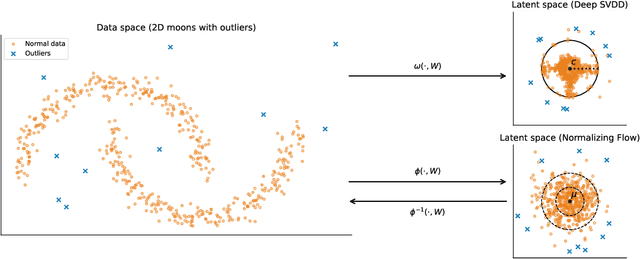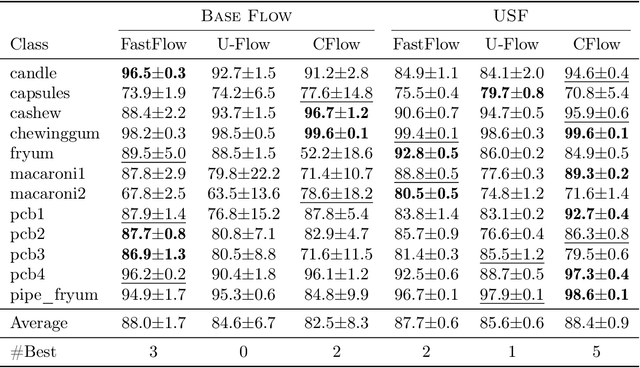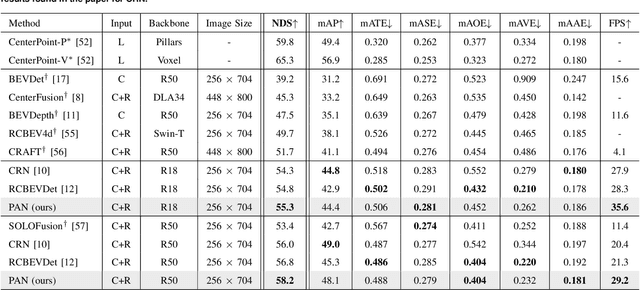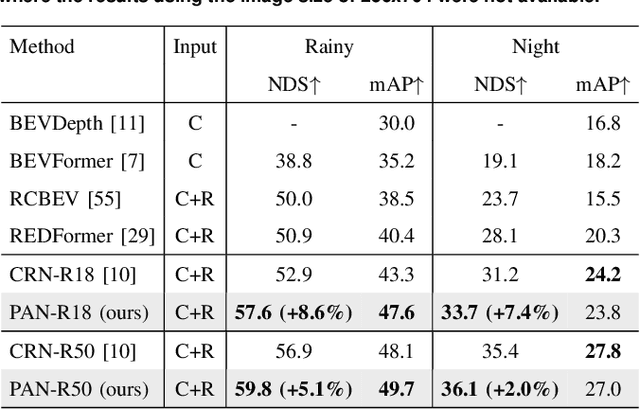Object Detection
Object detection is a computer vision task in which the goal is to detect and locate objects of interest in an image or video. The task involves identifying the position and boundaries of objects in an image, and classifying the objects into different categories. It forms a crucial part of vision recognition, alongside image classification and retrieval.
Papers and Code
Neural Network-Based Single-Carrier Joint Communication and Sensing: Loss Design, Constellation Shaping and Precoding
Sep 30, 2025



We investigate the impact of higher-order modulation formats on the sensing performance of single-carrier joint communication and sensing (JCAS) systems. Several separate components such as a beamformer, a modulator, a target detector, an angle of arrival (AoA) estimator and a communication demapper are implemented as trainable neural networks (NNs). We compare geometrically shaped modulation formats to a classical quadrature amplitude modulation (QAM) scheme. We assess the influence of multi-snapshot sensing and varying signal-to-noise ratio (SNR) on the overall performance of the autoencoder-based system. To improve the training behavior of the system, we decouple the loss functions from the respective SNR values and the number of sensing snapshots, using upper bounds of the sensing and communication performance, namely the Cram\'er-Rao bound for AoA estimation and the mutual information for communication. The NN-based sensing outperforms classical algorithms, such as a Neyman-Pearson based power detector for object detection and ESPRIT for AoA estimation for both the trained constellations and QAM at low SNRs. We show that the gap in sensing performance between classical and shaped modulation formats can be significantly reduced through multi-snapshot sensing. Lastly, we demonstrate system extension to multi-user multiple-input multiple-output to address the improvement of spatial efficiency when servicing multiple user equipments. Our contribution emphasizes the importance of estimation bounds for training neural networks, especially when the trained solutions are deployed in varying SNR conditions.
* Published in IEEE Access Source code available at https://github.com/frozenhairdryer/JCAS-loss-shape-precode
On Uniformly Scaling Flows: A Density-Aligned Approach to Deep One-Class Classification
Oct 10, 2025



Unsupervised anomaly detection is often framed around two widely studied paradigms. Deep one-class classification, exemplified by Deep SVDD, learns compact latent representations of normality, while density estimators realized by normalizing flows directly model the likelihood of nominal data. In this work, we show that uniformly scaling flows (USFs), normalizing flows with a constant Jacobian determinant, precisely connect these approaches. Specifically, we prove how training a USF via maximum-likelihood reduces to a Deep SVDD objective with a unique regularization that inherently prevents representational collapse. This theoretical bridge implies that USFs inherit both the density faithfulness of flows and the distance-based reasoning of one-class methods. We further demonstrate that USFs induce a tighter alignment between negative log-likelihood and latent norm than either Deep SVDD or non-USFs, and how recent hybrid approaches combining one-class objectives with VAEs can be naturally extended to USFs. Consequently, we advocate using USFs as a drop-in replacement for non-USFs in modern anomaly detection architectures. Empirically, this substitution yields consistent performance gains and substantially improved training stability across multiple benchmarks and model backbones for both image-level and pixel-level detection. These results unify two major anomaly detection paradigms, advancing both theoretical understanding and practical performance.
Making Machines Sound Sarcastic: LLM-Enhanced and Retrieval-Guided Sarcastic Speech Synthesis
Oct 08, 2025Sarcasm is a subtle form of non-literal language that poses significant challenges for speech synthesis due to its reliance on nuanced semantic, contextual, and prosodic cues. While existing speech synthesis research has focused primarily on broad emotional categories, sarcasm remains largely unexplored. In this paper, we propose a Large Language Model (LLM)-enhanced Retrieval-Augmented framework for sarcasm-aware speech synthesis. Our approach combines (1) semantic embeddings from a LoRA-fine-tuned LLaMA 3, which capture pragmatic incongruity and discourse-level cues of sarcasm, and (2) prosodic exemplars retrieved via a Retrieval Augmented Generation (RAG) module, which provide expressive reference patterns of sarcastic delivery. Integrated within a VITS backbone, this dual conditioning enables more natural and contextually appropriate sarcastic speech. Experiments demonstrate that our method outperforms baselines in both objective measures and subjective evaluations, yielding improvements in speech naturalness, sarcastic expressivity, and downstream sarcasm detection.
PANICL: Mitigating Over-Reliance on Single Prompt in Visual In-Context Learning
Sep 26, 2025Visual In-Context Learning (VICL) uses input-output image pairs, referred to as in-context pairs (or examples), as prompts alongside query images to guide models in performing diverse vision tasks. However, VICL often suffers from over-reliance on a single in-context pair, which can lead to biased and unstable predictions. We introduce PAtch-based $k$-Nearest neighbor visual In-Context Learning (PANICL), a general training-free framework that mitigates this issue by leveraging multiple in-context pairs. PANICL smooths assignment scores across pairs, reducing bias without requiring additional training. Extensive experiments on a variety of tasks, including foreground segmentation, single object detection, colorization, multi-object segmentation, and keypoint detection, demonstrate consistent improvements over strong baselines. Moreover, PANICL exhibits strong robustness to domain shifts, including dataset-level shift (e.g., from COCO to Pascal) and label-space shift (e.g., FSS-1000), and generalizes well to other VICL models such as SegGPT, Painter, and LVM, highlighting its versatility and broad applicability.
Extracting latent representations from X-ray spectra. Classification, regression, and accretion signatures of Chandra sources
Oct 15, 2025The study of X-ray spectra is crucial to understanding the physical nature of astrophysical sources. Machine learning methods can extract compact and informative representations of data from large datasets. The Chandra Source Catalog (CSC) provides a rich archive of X-ray spectral data, which remains largely underexplored in this context. This work aims to develop a compact and physically meaningful representation of Chandra X-ray spectra using deep learning. To verify that the learned representation captures relevant information, we evaluate it through classification, regression, and interpretability analyses. We use a transformer-based autoencoder to compress X-ray spectra. The input spectra, drawn from the CSC, include only high-significance detections. Astrophysical source types and physical summary statistics are compiled from external catalogs. We evaluate the learned representation in terms of spectral reconstruction accuracy, clustering performance on 8 known astrophysical source classes, and correlation with physical quantities such as hardness ratios and hydrogen column density ($N_H$). The autoencoder accurately reconstructs spectra with 8 latent variables. Clustering in the latent space yields a balanced classification accuracy of $\sim$40% across the 8 source classes, increasing to $\sim$69% when restricted to AGNs and stellar-mass compact objects exclusively. Moreover, latent features correlate with non-linear combinations of spectral fluxes, suggesting that the compressed representation encodes physically relevant information. The proposed autoencoder-based pipeline is a powerful tool for the representation and interpretation of X-ray spectra, providing a compact latent space that supports both classification and the estimation of physical properties. This work demonstrates the potential of deep learning for spectral studies and uncovering new patterns in X-ray data.
SSVIF: Self-Supervised Segmentation-Oriented Visible and Infrared Image Fusion
Sep 26, 2025Visible and infrared image fusion (VIF) has gained significant attention in recent years due to its wide application in tasks such as scene segmentation and object detection. VIF methods can be broadly classified into traditional VIF methods and application-oriented VIF methods. Traditional methods focus solely on improving the quality of fused images, while application-oriented VIF methods additionally consider the performance of downstream tasks on fused images by introducing task-specific loss terms during training. However, compared to traditional methods, application-oriented VIF methods require datasets labeled for downstream tasks (e.g., semantic segmentation or object detection), making data acquisition labor-intensive and time-consuming. To address this issue, we propose a self-supervised training framework for segmentation-oriented VIF methods (SSVIF). Leveraging the consistency between feature-level fusion-based segmentation and pixel-level fusion-based segmentation, we introduce a novel self-supervised task-cross-segmentation consistency-that enables the fusion model to learn high-level semantic features without the supervision of segmentation labels. Additionally, we design a two-stage training strategy and a dynamic weight adjustment method for effective joint learning within our self-supervised framework. Extensive experiments on public datasets demonstrate the effectiveness of our proposed SSVIF. Remarkably, although trained only on unlabeled visible-infrared image pairs, our SSVIF outperforms traditional VIF methods and rivals supervised segmentation-oriented ones. Our code will be released upon acceptance.
The Missing Piece: A Case for Pre-Training in 3D Medical Object Detection
Sep 19, 2025Large-scale pre-training holds the promise to advance 3D medical object detection, a crucial component of accurate computer-aided diagnosis. Yet, it remains underexplored compared to segmentation, where pre-training has already demonstrated significant benefits. Existing pre-training approaches for 3D object detection rely on 2D medical data or natural image pre-training, failing to fully leverage 3D volumetric information. In this work, we present the first systematic study of how existing pre-training methods can be integrated into state-of-the-art detection architectures, covering both CNNs and Transformers. Our results show that pre-training consistently improves detection performance across various tasks and datasets. Notably, reconstruction-based self-supervised pre-training outperforms supervised pre-training, while contrastive pre-training provides no clear benefit for 3D medical object detection. Our code is publicly available at: https://github.com/MIC-DKFZ/nnDetection-finetuning.
* MICCAI 2025
Anomaly-Aware YOLO: A Frugal yet Robust Approach to Infrared Small Target Detection
Oct 06, 2025Infrared Small Target Detection (IRSTD) is a challenging task in defense applications, where complex backgrounds and tiny target sizes often result in numerous false alarms using conventional object detectors. To overcome this limitation, we propose Anomaly-Aware YOLO (AA-YOLO), which integrates a statistical anomaly detection test into its detection head. By treating small targets as unexpected patterns against the background, AA-YOLO effectively controls the false alarm rate. Our approach not only achieves competitive performance on several IRSTD benchmarks, but also demonstrates remarkable robustness in scenarios with limited training data, noise, and domain shifts. Furthermore, since only the detection head is modified, our design is highly generic and has been successfully applied across various YOLO backbones, including lightweight models. It also provides promising results when integrated into an instance segmentation YOLO. This versatility makes AA-YOLO an attractive solution for real-world deployments where resources are constrained. The code will be publicly released.
PAN: Pillars-Attention-Based Network for 3D Object Detection
Sep 19, 2025



Camera-radar fusion offers a robust and low-cost alternative to Camera-lidar fusion for the 3D object detection task in real-time under adverse weather and lighting conditions. However, currently, in the literature, it is possible to find few works focusing on this modality and, most importantly, developing new architectures to explore the advantages of the radar point cloud, such as accurate distance estimation and speed information. Therefore, this work presents a novel and efficient 3D object detection algorithm using cameras and radars in the bird's-eye-view (BEV). Our algorithm exploits the advantages of radar before fusing the features into a detection head. A new backbone is introduced, which maps the radar pillar features into an embedded dimension. A self-attention mechanism allows the backbone to model the dependencies between the radar points. We are using a simplified convolutional layer to replace the FPN-based convolutional layers used in the PointPillars-based architectures with the main goal of reducing inference time. Our results show that with this modification, our approach achieves the new state-of-the-art in the 3D object detection problem, reaching 58.2 of the NDS metric for the use of ResNet-50, while also setting a new benchmark for inference time on the nuScenes dataset for the same category.
MCOD: The First Challenging Benchmark for Multispectral Camouflaged Object Detection
Sep 19, 2025Camouflaged Object Detection (COD) aims to identify objects that blend seamlessly into natural scenes. Although RGB-based methods have advanced, their performance remains limited under challenging conditions. Multispectral imagery, providing rich spectral information, offers a promising alternative for enhanced foreground-background discrimination. However, existing COD benchmark datasets are exclusively RGB-based, lacking essential support for multispectral approaches, which has impeded progress in this area. To address this gap, we introduce MCOD, the first challenging benchmark dataset specifically designed for multispectral camouflaged object detection. MCOD features three key advantages: (i) Comprehensive challenge attributes: It captures real-world difficulties such as small object sizes and extreme lighting conditions commonly encountered in COD tasks. (ii) Diverse real-world scenarios: The dataset spans a wide range of natural environments to better reflect practical applications. (iii) High-quality pixel-level annotations: Each image is manually annotated with precise object masks and corresponding challenge attribute labels. We benchmark eleven representative COD methods on MCOD, observing a consistent performance drop due to increased task difficulty. Notably, integrating multispectral modalities substantially alleviates this degradation, highlighting the value of spectral information in enhancing detection robustness. We anticipate MCOD will provide a strong foundation for future research in multispectral camouflaged object detection. The dataset is publicly accessible at https://github.com/yl2900260-bit/MCOD.
 Add to Chrome
Add to Chrome Add to Firefox
Add to Firefox Add to Edge
Add to Edge